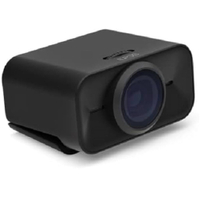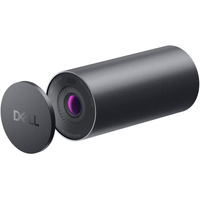Best webcams in 2024: the 1080p and 4K webcams I recommend for gamers and streamers
These are the best webcams for streaming and video calls.
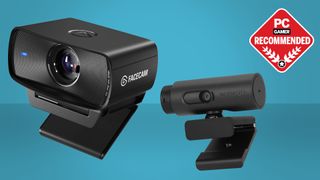
🎥 The list in brief
1. Best overall
2. Best budget
3. Best budget for streamers
4. Best 4K
5. Best for low light
6. Best high-end
7. Also tested
8. How we test
9. FAQ
The best webcam should make you look your best no matter if you're in a dimly lit bedroom or home office. We've tested all the options out there to find the best ones to grab, including options best suited to video calls at work and those intended for streaming to your adoring fans.
If you're looking for the best webcam overall, that would be the Elgato Facecam MK. 2. It's incredibly versatile and boasts superb picture quality, as well as some quality-of-life features content creators will appreciate. Importantly, it's a major improvement on the original Facecam, but notably cheaper too. If you're simply looking for the best picture quality at a reasonable price, the Logitech C920 is a solid 1080p webcam choice, even after all these years.
Many of these webcams support 1080p, some at 60 fps, and fewer 4K, which adds to the price tag. If you're perfecting your streaming set-up you might want that higher frame rate capability, but you really want a webcam that deals well with the lighting conditions wherever you're streaming from. An extra light will also go a long way to improving picture quality.

As a child of the '90s, Jacob knows what makes a terrible webcam. Moreover, his years of experience with the latest and greatest webcams has cemented in his mind what makes one great. From the classic C920 to the finest 4K, he knows which webcam to recommend.
The quick list
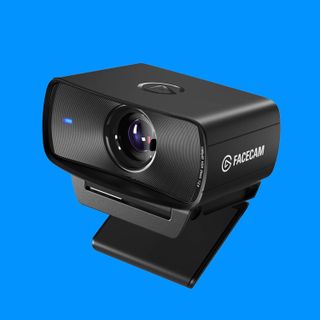
The best overall
A high quality webcam that improves on the original model in a number of ways, and costs less. An excellent Sony sensor makes this 1080p webcam the best blend of value and quality around.
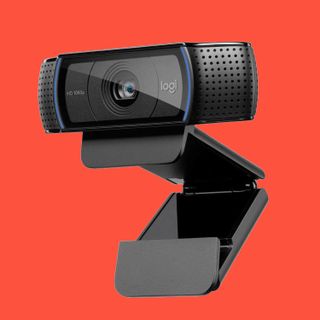
The best budget
A long-lasting design that still gets the job done. This webcam can be found going extremely cheap and it's well worth it.
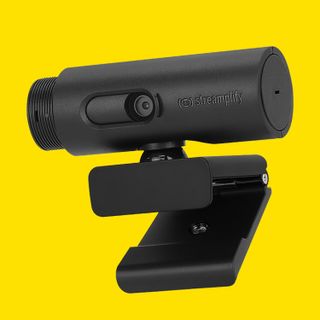
The best for streamers
For 60 fps capture and the convenience of a privacy shield, you'd be surprised just how affordable the Streamplify Cam is.
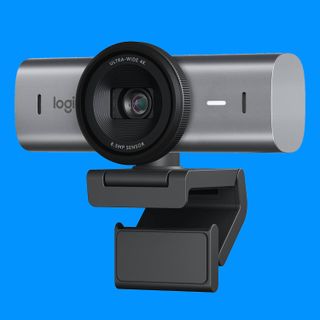
The best 4K
While there are only a few good reasons to own a 4K webcam for your average PC user, the MX Brio is a great fit for anyone who needs the extra resolution.
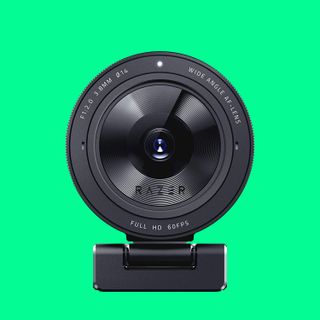
The best for low light
In our testing we found Razer's Kiyo Pro the best in dimly-lit rooms. That's thanks to a great light sensor stuffed inside.

The best high-end
The OBSBot Tiny 2 is an excellent 4K webcam that's further elevated by its excellent AI features and software app.
Recent updates
This article was updated on April 5, 2024 to include new entries and update to a new and improved format.
The best webcam







Specifications
Reasons to buy
Reasons to avoid
✅ You want a great 1080p webcam: If you don't feel the need for 4K, which many users really don't need in a webcam, then the Facecam MK.2 is the best webcam around.
✅ You want comprehensive customisation: The Camera App makes for light work of little tweaks and changes, and it offers HDR mode to really bring out the best in your capture.
❌ You want a cheap webcam: The best budget webcam is the Logitech C920, and it also offers 1080p capture. It's just not anywhere near as refined as the Facecam MK.2.
❌ You don't have an Nvidia graphics card: Some of the features on the Facecam are locked with Nvidia's Broadcast app, which requires one of its own GPUs. These aren't must-have options, at least.
The best webcam money can buy is the Elgato Facecam MK.2. Improving on a few key features over its predecessor, and our previous pick for the best webcam, the Facecam MK.2 delivers a fantastic picture quality for video calls, streaming and recording.
The Facecam MK.2 offers uncompressed 1080p video capture. This makes for an artefact-free video stream. It's not 4K-capable but that works just fine for anyone looking to use this camera for streaming, rather than recording, be that on Twitch, Google Meet, or Zoom.
Built using the same Sony STARVIS sensor as the original Elgato Facecam, the MK.2 does differ in its smaller 'eye' and generally shrunken form factor. It's less domineering over your monitor for its size reduction, and altogether retains the same, if not better, quality. The way in which the webcam clips onto a monitor has also been greatly improved with the MK.2, and it features a privacy shield. All very useful quality-of-life upgrades.
What's more, despite its improvements, the MK.2 released at a lower price than its predecessor.
One of the more impressive features on the Facecam MK.2 is the inclusion of an HDR mode. This mode's effectiveness will depend on your exact lighting setup, but we generally much preferred the capture quality and appearance with HDR mode enabled. The Facecam MK.2 will do well in low-light situations, but HDR mode also helps a great deal with high light levels, such as a bright window directly behind the user. HDR mode will lock you out of some of the fine-tuning options within the Camera Hub software, but it's not much of a concern to the average user.
Overall, the Facecam MK.2 is simply an all-round excellent 1080p webcam, and one that will suit pretty much any gamer, streamer, content creator or corporate drone.
Read our full Elgato Facecam MK.2 review.
The best budget webcam



2. Logitech C920
Our expert review:
Specifications
Reasons to buy
Reasons to avoid
✅ You need a cheap webcam for video calls: You won't find a better blend of value and quality than the C920, even after all these years of it being around.
❌ You want a privacy shield: You can purchase 3D-printed privacy shields for the C920 rather cheaply, but it doesn't come with one. You could also instead spend a small amount more on the Streamplify Cam, which has one built-in.
Most readers can stop here. Unless you're looking for specific features in a webcam then there is no better than the Logitech C920. It's both the best budget webcam and the one that makes the most sense for the average PC user.
The Logitech C920 has been around for years, and has been floating around in our best webcam guide for about as long, too. Occasionally we've opted for the minorly different C922, but whichever is cheapest at the time is best.
Almost everyone on-team has used one at some point, and many still do to this day. Myself included—I have owned a C920 for probably over ten years now and it still works the same as the day I bought it. You can't argue with that, really.
It just ticks pretty much every box from a webcam do-want list. Its sharp 1080p images, paired with a wide field of view and great autofocus, make it a fantastic video conferencing choice. For a working world filled with Google Meets and Zoom calls, it works a treat for not a whole lot of money.
It is limited to 30 fps in full 1080p mode, but if you want a slicker picture you can switch to 720p and snag a smoother 60 fps level for your video. But if you're just needing a cam for work, or to catch up with your buddies online, that's all you need.
But if you're looking for a webcam that will deliver beautiful, slick, high resolution content, then you are going to have to look elsewhere on this list, like the MX Brio or OBSBot Tiny 2. And spend a fair bit more, too.
For streamers who don't need a full-screen high-res picture, the C920 is a great webcam to get started since you can track on down for less $100 at most retailers. There's also the C930e and C922, for the titans of industry among us, but we prefer this cheaper option.
The best budget webcam for streamers



Specifications
Reasons to buy
Reasons to avoid
✅ You need a privacy shield for peace of mind: You don't have to fiddle with third-party shields or stickers here: the Streamplify Cam comes with a privacy shield built-in.
✅ You need a 1080p60 picture: 60 fps can make all the difference for sharing video on social media, which is why we recommend the Streamplify as a budget option for streamers.
❌ You want the best overall picture quality: The 2 MP camera on the Cam isn't the best you can buy, even in a modest price range.
The best budget webcam for streamers is the Streamplify Cam. You might not be familiar with the brand as it's quite new, but we've nevertheless been impressed with the range of features its cheap and cheerful webcam offers.
The 1080p capture might not be individually convincing versus the often a little cheaper C920, though you would be missing out on the 60 fps that the Streamplify Cam offers. That extra frame rate, which is pretty rare in this price range, comes in handy if you want to stream or capture a generally smoother feed for sharing elsewhere, such as social media platforms.
The Streamplify Cam comes with a built-in privacy shield, which consists of the entire body conveniently sliding back and forth across the camera lens.
The wide 90-degree FOV comes in handy for setting up shots, and you can fully swivel the Streamplify Cam around a full 360 degrees for further adjustments. There's also a screw-in tripod included in the box, should you wish to ditch the top down on-the-monitor angle we're usually stuck with. Handy if you're a budding streamer looking to make life a bit easier, or perhaps you might want to set up a secondary webcam for a different angle to zhush up your feed.
With solid performance in a range of lighting conditions, though admittedly slightly flat colours, we remain pretty impressed with the Streamplify Cam considering its price tag. You won't find any software included to tweak with much on the camera, but you can get a good deal done in third-party software, even OBS.
Read our full Streamplify Cam review.
The best 4K webcam






Specifications
Reasons to buy
Reasons to avoid
✅ You absolutely must have 4K: It's tough to believe, but the MX Brio is reasonably priced compared to some 4K webcams, such as the OBSBot Tiny 2. It's darn good, too.
❌ You could pass on 4K: It's a lovely luxury to have a high resolution ready to go if you need it, but 4K webcams don't come cheap. You can get the Facecam MK.2 for a lot less.
The Logitech MX Brio is the best 4K webcam, and the most advanced camera Logitech has made to date. It's offers a combination of a fantastic 8.5MP Sony STARVIS sensor with great autofocus and auto exposure settings.
You can score either 4K at 30 fps or 1080p at 60 fps on the MX Brio. That means it's not only a high resolution camera when you need it, but a darn good one for streaming or content creation, too. Though admittedly the use cases for a 4K webcam are slim for most PC users, if you do need the higher resolution for recording footage then you won't be disappointed with the MX Brio.
It's a chunky webcam, though it's longer than it is high, which helps keep it from imposing too greatly on the top of your monitor. Besides an active use LED, which lets you know when the camera is in use, there's also a built-in privacy shield for peace of mind when the cam's out of action.
The MX Brio's high resolution wouldn't mean much if it weren't for autofocus and auto exposure settings that really work wonders on the Brio. Where we've previously seen a webcam get blown out by bright light or washed out by trying to deal with low-light, the Brio manages both rather well. There's also an HDR mode that helps bring a bit more colour and depth to a bright picture.
The only major downside to the MX Brio is the price. I know, shocker. It's more cash than the Elgato Facecam MK.2 by some margin, despite being very similar in many ways, except the 4K max resolution. You have to consider whether you really need the 4K resolution on the MX Brio before buying one—many will likely find it's actually not altogether that useful, except in a few niche circumstances.
If you're sure about wanting 4K, look no further than the MX Brio.
Read our full Logitech MX Brio review.
The best low light webcam




Specifications
Reasons to buy
Reasons to avoid
✅ You live in a cave (or more generally don't get much natural light): You don't have to be a cave-dweller to benefit from a webcam that excels in low lighting conditions.
❌ You want the best 1080p picture quality: The Kiyo Pro is great, but it's not quite on par with the Facecam MK.2.
The Kiyo Pro is the best low-light webcam because it improves on Razer's previous webcams with a slightly different approach to handling lighting in dark spaces. It ditches the ring light, which wasn't always bright enough to make a big difference, in favor of a sophisticated light sensor.
Getting rid of the ring light was a good move for Razer. It felt like a novelty, but more so it just wasn't going to actually improve the overall image. The light sensor on the Kiyo Pro, however, actually does. Even in darkly lit environments, the Kiyo Pro maintains an impressive picture.
The Kiyo Pro's other improvements include HDR, 1080p resolution at 60 fps, a wide-angle lens, and an omnidirectional microphone.
The light sensor helps significantly compared to the Logitech StreamCam. The abundance of light coming from windows can almost completely blow out half of my shot on the StreamCam while the Kiyo Pro manages to adjust. It's a bit contrast heavy as a result, but that's worth it for the night-time performance.
The Kiyo Pro truly shines (pun absolutely intended) at night. The Kiyo Pro manages to keep me separated enough from my background while keeping both well lit to make the camera usable with even a little light.
Though perhaps the best feature of the Kiyo Pro nowadays is that, since it's a little older than some others on this list, it's frequently discounted. When it's well below $100, we can't recommend it enough, so don't miss that opportunity if it arises. That's a discount we see frequently on Amazon, too.
Read our full Razer Kiyo Pro review.
The best high-end webcam





Specifications
Reasons to buy
Reasons to avoid
✅ You want to experiment with new angles: If you're a streamer or content creator hoping to branch out beyond the traditional webcam-on-face angle, you'll find plenty of flexibility to do that with the OBSBot.
❌ You just want a straightforward webcam and nothing more: You could spend big on the OBSBot and ignore all its great features or you could save your cash on another 4K or 1080p webcam that costs a whole lot less.
The OBSBot Tiny 2 is our pick for the best high-end webcam, but what does that really mean? Well, it comes with some actually useful AI and tracking features that elevate if from a humble webcam into something else.
The Tiny 2's image quality excels. It does a great job of capturing details, contrast, and colors. It's does an adequate job In low light situations too, but in the end there's no substitute for a larger sensor. Adding a key light will take care of that, dramatically enhancing picture quality.
Hardware wise, the Tiny 2 boasts a 50MP, 1/1.5-inch CMOS sensor with an f1.9 aperture and a 26mm focal length. This allows it to achieve that creamy bokeh, separating the foreground from the background for a real professional look. The glass can handle up to 4X zoom and offers both autofocus and manual focus.
The Tiny 2 can supports 4K video at 30 fps with HDR. Other supported resolutions include 1080p, 960p, and 720p, supporting frame rates of 60, 30, 25, 24, 20, and 15 frames per second. Output options include MJPEG, YUV, and H264 formats, catering to the preferences of the majority of video creators. The Tiny 2 seamlessly collaborates with OBS Studio, Nvidia Broadcast, Zoom, Teams, and Google Meet.
OBSBot really outdid itself with its fully featured Webcam app. It houses the main sections for tweaking tracking modes, setting presets, and it includes a virtual joystick for gimbal and zoom control. The AI section offers specialized options for Desk Mode, Whiteboard, Hand tracking, and Group video. It can even recognize limited voice and gesture commands.
The tabs for Image and Beauty includes options for various effects, exposure, color grading, and filters. And its got some really fun features like being able to alter body parts. That's the kind of thing that will bring out the inner child in all of us. It's a really feature rich app and it adds a lot of value to the overall package.
Overall, the OBSBot Tiny 2 is one of the most impressive all-round cameras we've ever laid eyes on. No matter if you're checking in on a Zoom call, a streamer, or whipping up a funny TikTok dance. Its ability to capture stunning high-resolution video, track movements, and respond to commands is a game-changer for the solo creator. While the price might be steep, considering what you get, it's well worth the investment.
Read our full OBSBot Tiny 2 review.
Also tested
<a href="http://hawk.ly/m/Epos-S6/i/pcg-dj" data-link-merchant="hawk.ly"">Epos S6
The Epos S6 is a surprisingly decent webcam from a brand that, sadly, isn't in the game anymore. It's kaput, and that takes the Epos S6 out of the running for our guide.
Read our full <a href="https://www.pcgamer.com/epos-s6-4k-webcam-review/" data-link-merchant="pcgamer.com"" data-link-merchant="hawk.ly"" target="_blank">Epos S6 webcam review.
<a href="http://hawk.ly/m/Dell-Ultrasharp-WB7022/i/pcg-dj" data-link-merchant="hawk.ly"" target="_blank">Dell Ultrasharp WB7022
A professional 4K webcam, the Ultrasharp offers a fine alternative to other 4K options. Though we still like our pick more.
Read our full <a href="https://www.pcgamer.com/dell-ultrasharp-wb7022/" data-link-merchant="pcgamer.com"" data-link-merchant="hawk.ly"" target="_blank">Dell Ultrasharp WB7022 review.
How we test webcams
Discord's video conferencing feature has taken the world by storm. As such, we've included it in our testing software suite alongside more staple corporate video calling software, such as Google Meets and Zoom. We test the video quality in both apps at the maximum supported resolution. OBS is still our choice go-to app for streaming and video recording.
We use OBS to stream and record videos from each camera, testing them both fullscreen and scaled down to a "face cam" size. We also use each manufacturer's webcam software to get a feel for it. We take the highest possible resolution pictures with each webcam and manually adjust settings like white balance, brightness, auto-focus, and others where applicable.
We tend to use the latest and greatest webcams ourselves for a period of at least a few weeks to really get to grips with what it's like to use the product day-to-day.
Software for webcams is just as critical—if not more so—than other peripherals. Although many streaming and conferencing apps have built-in adjustment options, using the manufacturer's driver software allows you to adjust the settings globally. So we make sure to see how this all stacks up in actual use.
Aside from the video quality, we also look at their ease of use. Each manufacturer has a different method of attaching a webcam to the monitor, so we test them across different monitor shapes and sizes. We consider whether the webcam cord is long enough to reach from the top of a monitor to a case underneath a desk.
Webcam FAQ
What resolution webcam do I need?
If you plan to record at full-screen resolution, you may want to look at a 4K webcam. However, if you plan on streaming or keeping your webcam confined to only a small portion of your screen, the improved resolution will likely be lost, so sticking with a 1080p webcam should be more then enough for most folks.
What should I look for in a webcam?
The process of selecting the right webcam is much like choosing a good camera. Most of the metrics we use to determine camera quality also apply to webcams. You should pay attention to the image quality, color accuracy, focus speed, and customizable features. Although many of us have dedicated microphones, the onboard microphone can come in handy too.
One of the greatest determiners of image quality is the amount of noise present in an image. Most webcams have no trouble producing good image quality when lighting is ample. The extra quality of the best webcams is more accurately reflected in low light; however, the camera needs to compensate for the lack of light digitally. Generally speaking, more expensive webcams come with higher quality sensors and usually have less pesky color blots compared to cheaper ones.
The other crucial aspect is the color of the images. Before we even begin to examine the color quality, we should pay attention to the white balance. White balance gauges the temperature of the lighting from your surrounding environment and sets the white point accordingly. The image may be masked with a blue or yellow tint if the white point is incorrectly set. Unless a tuning utility is included, the webcam's processor usually automatically adjusts the white balance.
Next is exposure, saturation, and contrast—all three are equally important. Exposure is the brightness of the image, saturation is the depth of the colors, and contrast is the difference between black and white. Brightness ensures that you can be seen clearly, while saturation and contrast make your images pop. Again, unless the software is included, the webcam's processor normally adjusts these settings automatically. More expensive webcams are more adept at replicating the most accurate scene.
PC Gamer Newsletter
Sign up to get the best content of the week, and great gaming deals, as picked by the editors.

Jacob earned his first byline writing for his own tech blog. From there, he graduated to professionally breaking things as hardware writer at PCGamesN, and would go on to run the team as hardware editor. Since then he's joined PC Gamer's top staff as senior hardware editor, where he spends his days reporting on the latest developments in the technology and gaming industries and testing the newest PC components.
- Kizito Katawonga
- Chris SzewczykHardware Writer
Most Popular





